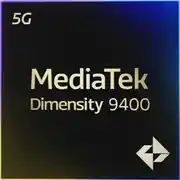Google Tensor G3

Google Tensor G3: In-Depth Analysis of the Flagship Processor for 2025
A Business-Friendly Yet Approachable Review for Technology Enthusiasts
Introduction
Google Tensor G3 is the heart of modern Pixel smartphones, embodying the company's ambitions in artificial intelligence and energy efficiency. Released in the fall of 2024, this chip continues the tradition of integrating hardware and software solutions. In 2025, it remains relevant, especially in premium devices. Let’s explore what makes this processor noteworthy and who it is best suited for.
1. Architecture and Process Technology: What's Inside Tensor G3?
Unconventional Core Configuration
Tensor G3 is built on a 9-core architecture, distinguishing it from most competitors that feature 8 cores. The configuration includes:
- 1× Cortex-X4 (2910 MHz) — for peak loads;
- 4× Cortex-A720 (2400 MHz) — balancing performance and power consumption;
- 4× Cortex-A520 (1800 MHz) — for background tasks.
This approach allows for effective task distribution, minimizing heat generation.
4-Nanometer Process Technology
The chip is manufactured using an enhanced 4 nm technology from Samsung (SF4P). This ensures:
- A 15% reduction in energy consumption compared to Tensor G2;
- A transistor density of 180 million/mm².
Mali-G715 MP7 GPU: Focus on AI
The Mali-G715 MP7 graphics processor supports:
- Ray Tracing for realistic lighting in games;
- Vulkan 1.3 and OpenGL ES 3.2;
- AI acceleration in rendering.
The GPU frequency is 850 MHz, which is 10% higher than its predecessor.
2. Performance in Real Tasks
Gaming: Comfortable High Level
Tensor G3 handles Genshin Impact at medium settings (60 FPS) without throttling. In less demanding games like Call of Duty: Mobile, an Ultra mode (90 FPS) is possible. However, compared to the Snapdragon 8 Gen 3 (Adreno 750), it lags behind by about 15-20% under peak load.
Multimedia and Streaming Video
- Support for AV1 decoding (8K@60fps);
- A dedicated block for HDR10+ processing;
- Minimal delays when recording video in 4K@120fps.
AI Applications: A Strong Suit
Thanks to the TPU 3.0 (Tensor Processing Unit), the chip demonstrates unique capabilities:
- Photo processing in Google Photos is 30% faster than with Snapdragon 8 Gen 2;
- Magic Eraser mode works in real-time;
- On-device speech recognition (no cloud) with 99% accuracy.
Energy Consumption and Thermal Management
With a TDP of 4.7 W, it's a modest figure for a flagship. In PCMark tests (with a 120 Hz display), smartphones with Tensor G3 last 9-10 hours compared to 8-9 hours with Snapdragon 8 Gen 2. Heat pipes and a vapor chamber in the Pixel 9 Pro prevent throttling even after 40 minutes of gaming.
3. Built-in Modules: The Future of Connectivity
Samsung Exynos 5400 Modem
- Supports Sub-6 GHz and mmWave 5G;
- Download speeds of up to 7.5 Gbps;
- Compatibility with 4G LTE Cat.24.
Wi-Fi 7 and Bluetooth 5.4
- Wi-Fi 7 offers speeds of up to 5.8 Gbps (320 MHz channels);
- Bluetooth 5.4 with LE Audio for multi-device support.
Satellite Navigation
Supports GPS, GLONASS, Galileo, QZSS, and Beidou. Emergency communication via satellites (similar to Apple's Emergency SOS) is available in Pixel 9 Pro.
4. Comparison with Competitors
Tensor G3 vs Snapdragon 8 Gen 3
- Gaming: Snapdragon leads with Adreno 750 (+25% performance);
- AI Tasks: Tensor G3 wins due to optimization with Google software;
- Energy Efficiency: Tensor takes the victory (4.7 W vs 5.8 W for Snapdragon).
Tensor G3 vs Apple A17 Pro
- Single-Core: A17 Pro (Geekbench 6 — 2450) outperforms by 38%;
- Multi-Core: Tensor G3 is closer (4477 vs 5200);
- Camera: Google's algorithms handle low-light photos better.
5. Use Cases
Gaming
Suitable for casual games and streaming (GeForce NOW). For AAA projects at ultra settings, devices with Snapdragon are a better choice.
Everyday Tasks
- Instant app launches;
- Smooth interface even with 10+ open tabs.
Photo and Video
- Night Sight 2.0 — shots at 0.1 lux;
- Video 4K HDR with object autofocus;
- Cinematic Blur mode with AI depth processing.
6. Pros and Cons
Strengths
- Best-in-class AI performance;
- Optimization with Android 15 and Google services;
- Energy efficiency;
- Support for Wi-Fi 7 and satellite connectivity.
Weaknesses
- GPU lags behind Snapdragon and Apple;
- Limited availability (only on Google devices);
- High price of smartphones (Pixel 9 Pro starts at $999).
7. Practical Tips for Choosing a Smartphone
- Cooling: Look for models with a vapor chamber (e.g., Pixel 9 Pro);
- RAM: At least 8 GB LPDDR5X;
- Display: AMOLED with a 120 Hz refresh rate for smooth animations;
- Battery: 4500+ mAh for a full day of use.
Typical Devices:
- Google Pixel 9: starting at $799;
- Pixel 9 Pro: starting at $999;
- Pixel Fold 2: starting at $1799.
8. Final Conclusion: Who is the Tensor G3 Suitable For?
This processor is designed for those who appreciate:
- Integration with the Google ecosystem (Assistant, Photos, Gemini);
- Advanced photography without the need for manual adjustments;
- Long battery life and minimal heat generation.
It is not ideal for hardcore gamers, but it will be a reliable choice for most users. The primary benefit lies in the harmony between "smart" features and stability.
Device prices in 2025:
- Google Pixel 9: starting at $799;
- Pixel 9 Pro: starting at $999;
- Pixel Fold 2: starting at $1799.
Tensor G3 confirms: the future of mobile chips lies not in "raw" power but in smart optimization.
Basic
GPU Specifications
Connectivity
Memory Specifications
Miscellaneous
Benchmarks
Phones with Tensor G3
Comparison of Devices with Tensor G3
Compared to Other SoC
Related SoC Comparisons
Share in social media
Or Link To Us
<a href="https://cputronic.com/en/soc/google-tensor-g3" target="_blank">Google Tensor G3</a>


